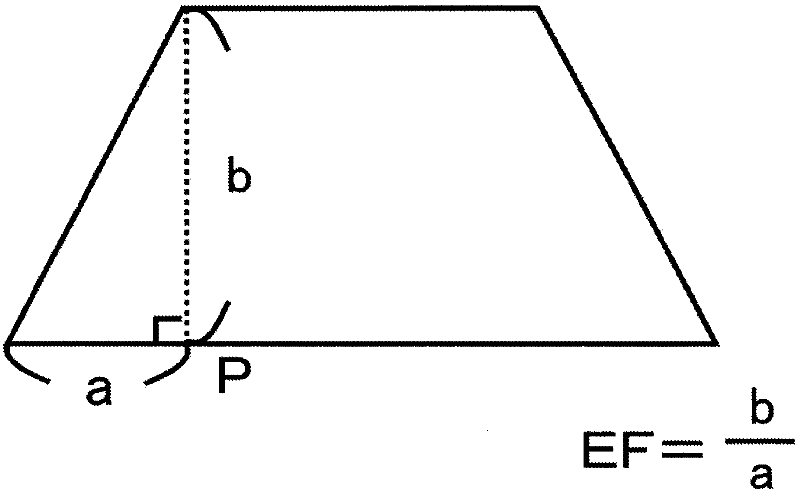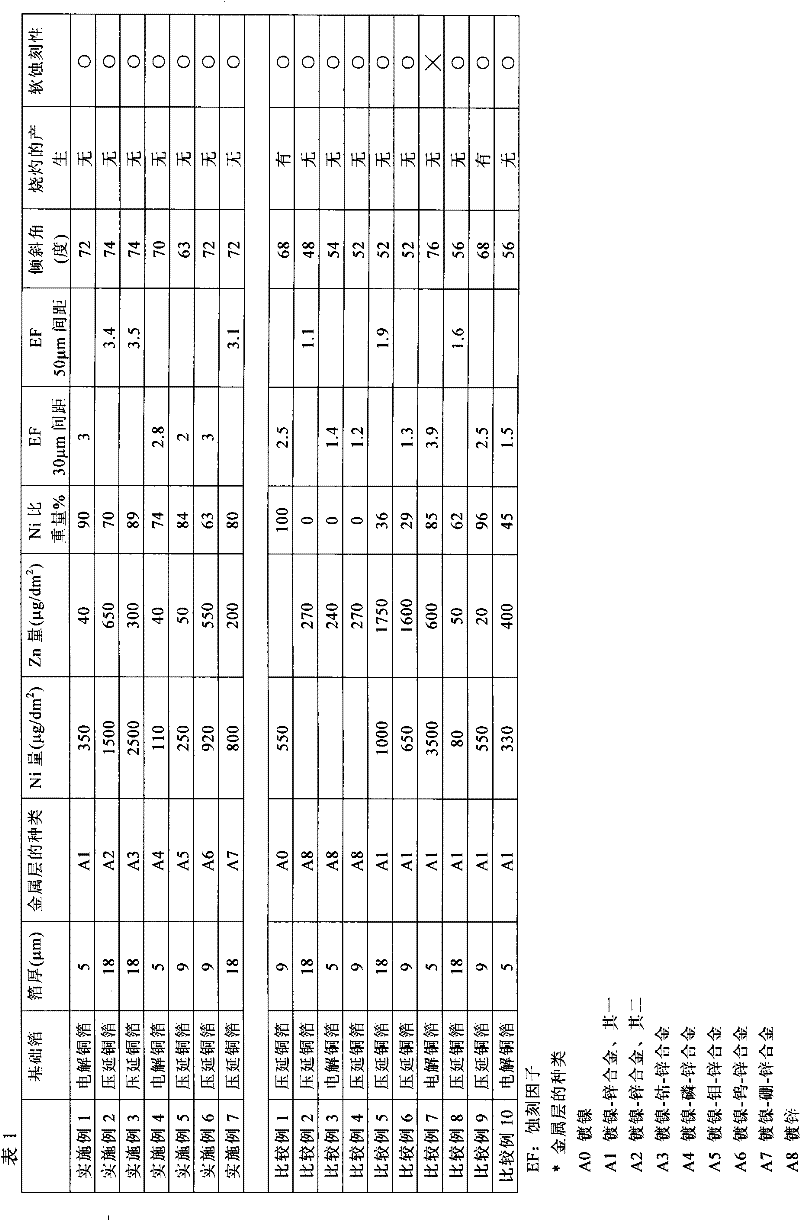Rolled copper foil or electrolytic copper foil for electronic circuits and method of forming electronic circuits using them
A technology of electronic circuit and rolling copper foil, which is applied in the direction of chemical/electrolytic method to remove conductive material, printed circuit, printed circuit, etc., to achieve the effect of shortening time, reducing thickness, and excellent electronic circuit forming method
- Summary
- Abstract
- Description
- Claims
- Application Information
AI Technical Summary
Problems solved by technology
Method used
Image
Examples
Embodiment 1
[0195] Electrodeposited copper foil of 5 μm is used. The surface roughness Rz of this electrolytic copper foil was 3 micrometers. Under the above-mentioned nickel-zinc alloy plating condition (1), 390 μg / dm is formed on the glossy (S) surface of the electrolytic copper foil 2 nickel-zinc alloy coating.
[0196] At this time, as shown in Table 1, the nickel content in the nickel-zinc alloy coating is 350 μg / dm 2 , the zinc content is 40μg / dm 2 . The nickel ratio is 90% by weight. The copper foil was bonded to the resin substrate using the side opposite to the surface provided with the nickel-zinc alloy plating layer as an adhesive surface.
[0197] Then, 10 circuits were printed through resist coating and exposure steps, and an etching process for removing unnecessary portions of the copper foil was performed. The etching conditions, circuit formation conditions, measurement conditions of etching factor, and burning test are as follows.
[0198] (etching conditions)
[...
Embodiment 2
[0220] A rolled copper foil with a foil thickness of 18 μm was used. The surface roughness Rz of this rolled copper foil was 0.7 micrometers. Under the conditions of the above-mentioned nickel-zinc alloy plating (Part 2), 2150 μg / dm was formed on the rolled copper foil 2 nickel-zinc alloy coating. As shown in Table 1, the amount of nickel in the nickel-zinc alloy coating is 1500 μg / dm 2 , the amount of zinc is 650μg / dm 2 . At this time, the nickel ratio was 70% by weight.
[0221] In addition, the copper foil was bonded to the resin substrate with the side opposite to the surface provided with the nickel-zinc alloy plating layer as an adhesive surface.
[0222] Then, 10 circuits were printed through the resist coating and exposure process similarly to Example 1, and the etching process for removing unnecessary part of copper foil was given.
[0223] Except for the circuit formation conditions, the etching conditions, the measurement conditions of the etching factor, and ...
Embodiment 3
[0232] A rolled copper foil with a foil thickness of 18 μm was used. The surface roughness Rz of this rolled copper foil was 0.7 micrometers. Under the above nickel-cobalt-zinc alloy plating conditions, a nickel-cobalt-zinc alloy plating layer is formed on the rolled copper foil. At this time, the cobalt substitution amount was 8% of the nickel amount (% by weight) in terms of nickel.
[0233] As shown in Table 1, the nickel content in the nickel-cobalt-zinc alloy coating is 2500 μg / dm 2 , the zinc content is 300μg / dm 2 . At this time, the nickel ratio was 89% by weight. In addition, this nickel ratio is the nickel equivalent amount of the total amount of cobalt and nickel.
[0234] In addition, the copper foil was bonded to the resin substrate using the side opposite to the surface provided with the nickel-cobalt-zinc alloy plating layer as an adhesive surface.
[0235] Then, 10 circuits were printed through the resist coating and exposure process similarly to Example 1...
PUM
| Property | Measurement | Unit |
|---|---|---|
| surface roughness | aaaaa | aaaaa |
| width | aaaaa | aaaaa |
| surface roughness | aaaaa | aaaaa |
Abstract
Description
Claims
Application Information
 Login to View More
Login to View More - R&D
- Intellectual Property
- Life Sciences
- Materials
- Tech Scout
- Unparalleled Data Quality
- Higher Quality Content
- 60% Fewer Hallucinations
Browse by: Latest US Patents, China's latest patents, Technical Efficacy Thesaurus, Application Domain, Technology Topic, Popular Technical Reports.
© 2025 PatSnap. All rights reserved.Legal|Privacy policy|Modern Slavery Act Transparency Statement|Sitemap|About US| Contact US: help@patsnap.com



